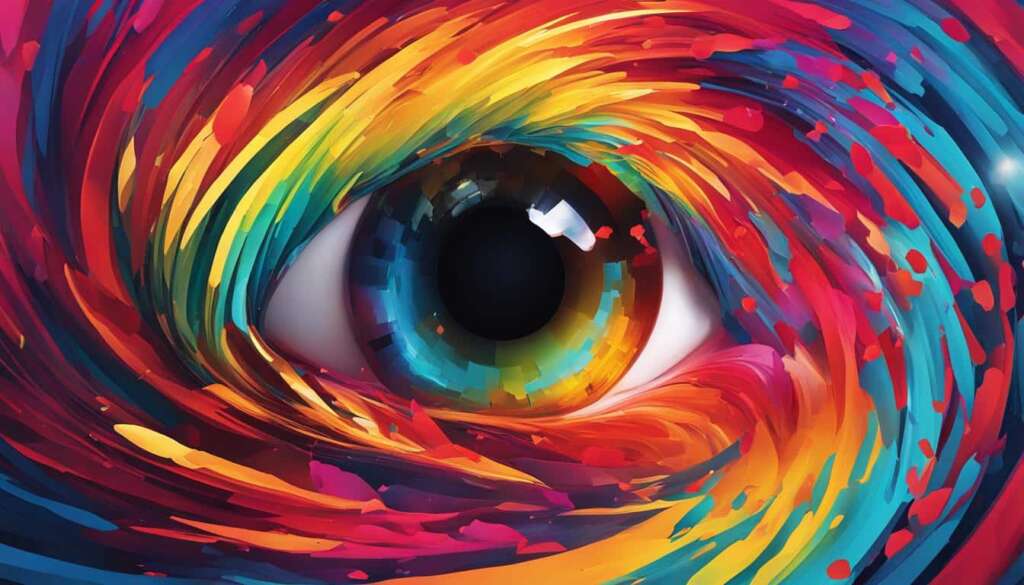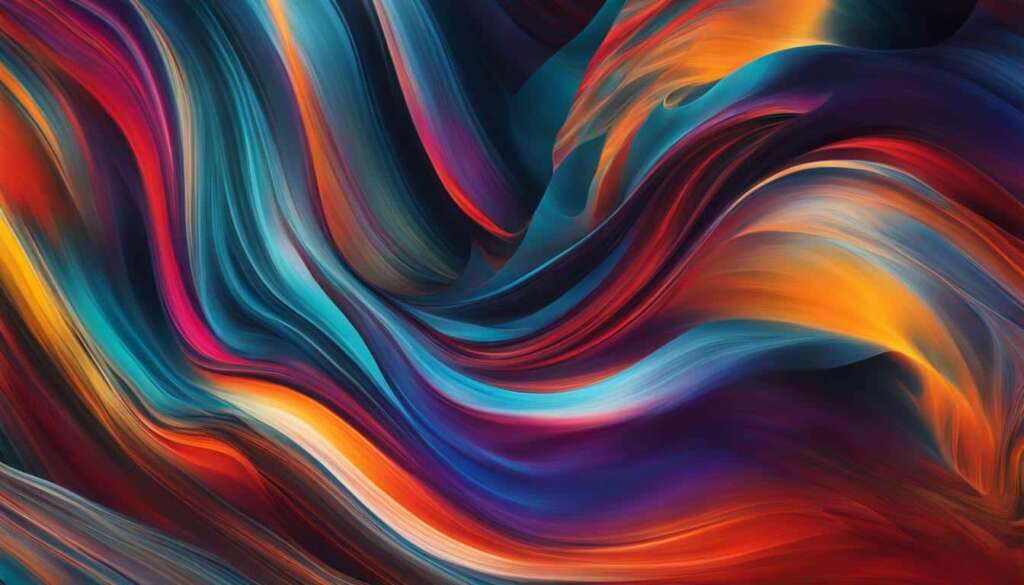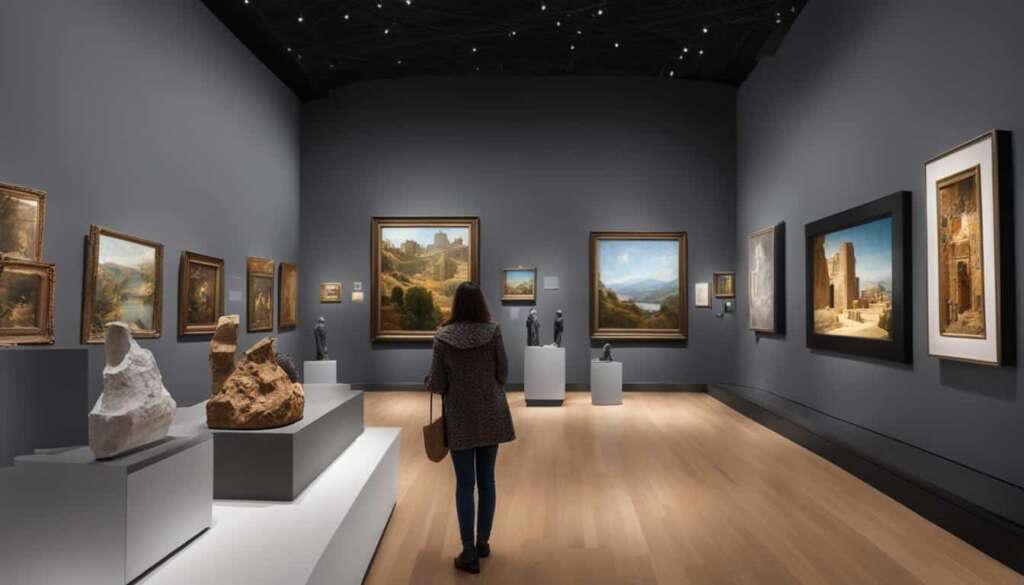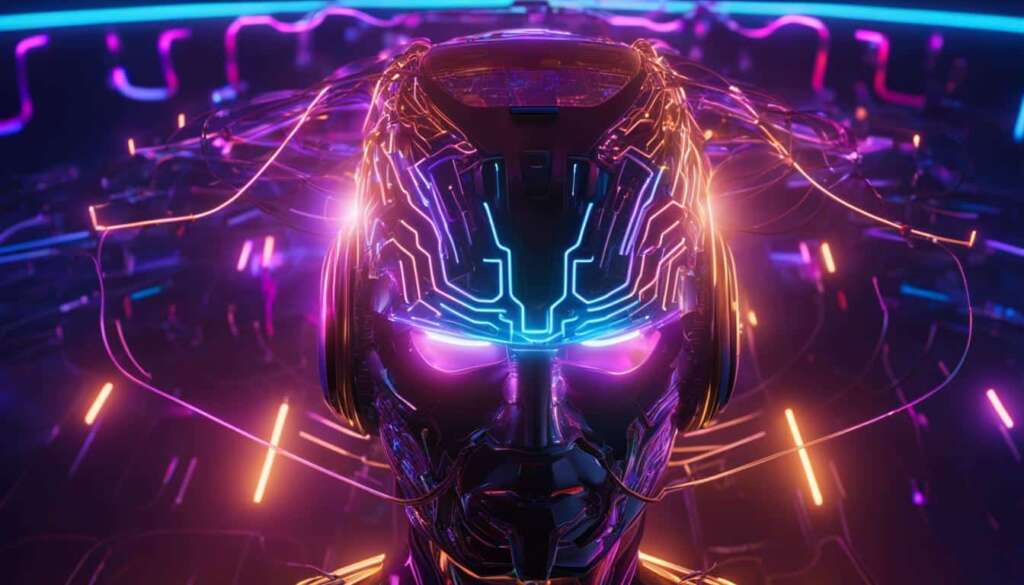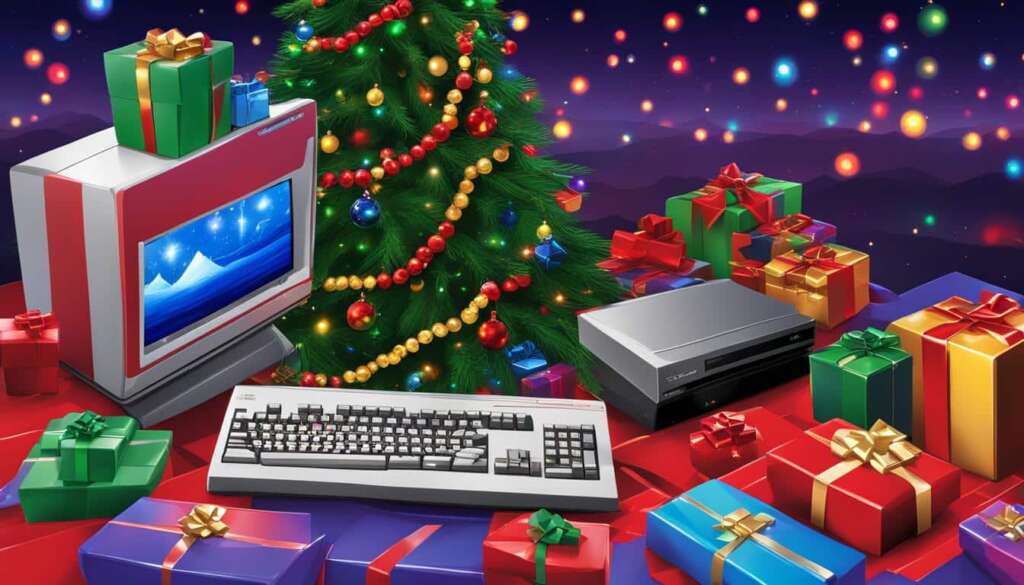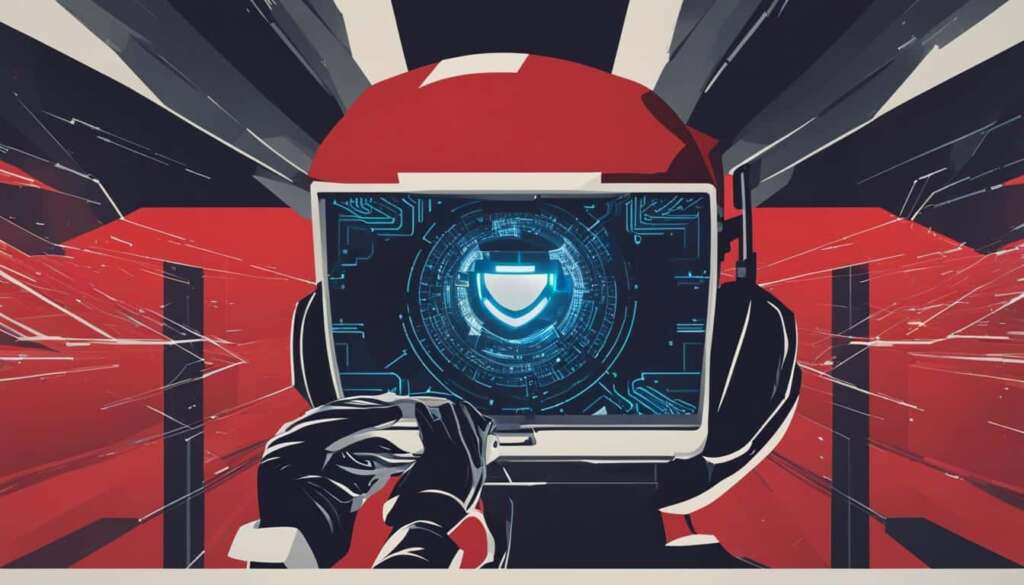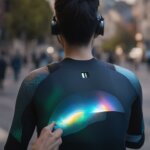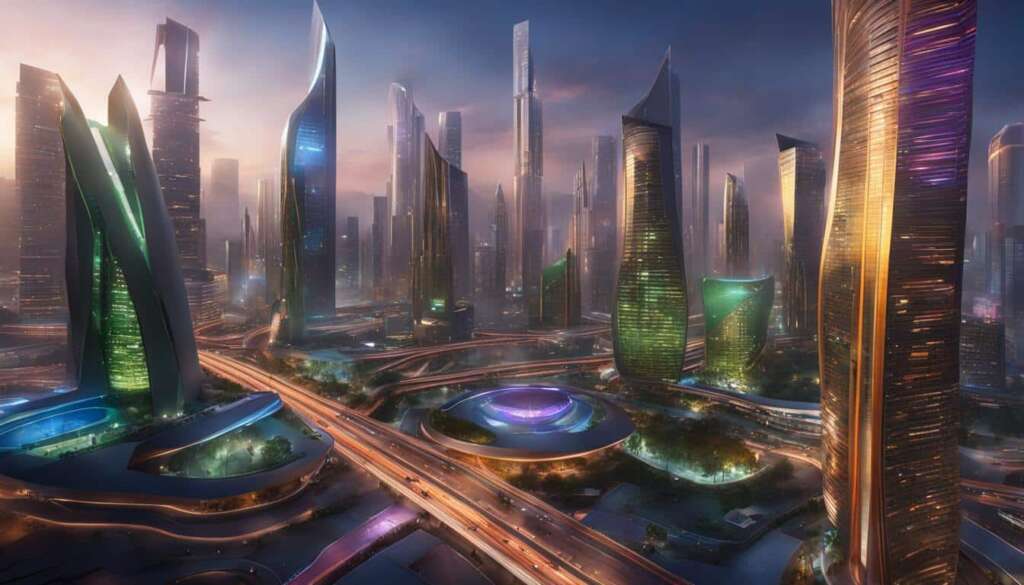Table of Contents
Welcome to the exciting world of digital art and graphic design! In this article, we will explore the top trends shaping the creative landscape in 2023. From mysticism and punk revival to retro aesthetics and acid graphics, this year’s digital design trends are pushing boundaries and inspiring new forms of artistic expression.
As technology advances, so does the software that designers use to bring their visions to life. Graphic design software plays a crucial role in enabling the creation of visually striking and immersive experiences. Whether you’re a professional artist or a design enthusiast, staying informed about the latest trends and tools is essential for keeping your skills up to date.
In the following sections, we will delve into each trend, providing insights and showcasing examples from various sources. From the calming and mystical allure of zodiac signs and sacred geometry to the rebellious energy of punk revival and the vibrant nostalgia of retro line art, there is something for everyone in the world of digital art and graphic design.
So, get ready to be inspired and discover the digital design trends that are shaping the creative landscape in 2023. Let’s dive in and explore the captivating world of digital art and graphic design software!
Mysticism in Graphic Design
Mysticism is a prevalent trend in graphic design, incorporating symbols related to astrology and divination. This trend embraces popular iconography such as zodiac signs, all-seeing eyes, lotus flowers, and sacred geometry. The visual style of mysticism often features thin lines, organic curves, and muted tones, creating a calming and serene atmosphere. These designs evoke a sense of upliftment and hope, providing an escape from everyday concerns. Examples of mystic designs can be seen in various artworks and illustrations.
Mystic Symbols in Graphic Design
The use of mystic symbols is a central aspect of the mysticism trend in graphic design. These symbols carry deep spiritual meaning and are often associated with ancient beliefs and practices. One of the most popular symbols used in mystic designs is the zodiac signs. Each zodiac sign represents different personality traits and characteristics, making them a powerful tool for self-expression and personal growth.
Another prominent symbol is the all-seeing eye, which is often associated with divine knowledge and spiritual enlightenment. This symbol serves as a reminder to seek inner wisdom and tap into the universal consciousness. Lotus flowers are also commonly used in mystic designs, representing purity, rebirth, and spiritual awakening.
| Zodiac Signs | All-Seeing Eye | Lotus Flower |
|---|---|---|
| Pisces | “The eye through which I see God is the same eye through which God sees me; my eye and God’s eye are one eye, one seeing, one knowing, one love” – Meister Eckhart | https://www.youtube.com/watch?v=M8Bh2fZ9Zcs |
| Leo | “The eye sees only what the mind is prepared to comprehend” – Robertson Davies | |
| Scorpio | “Beauty is not in the face; beauty is a light in the heart” – Kahlil Gibran |
Sacred Geometry in Graphic Design
Sacred geometry is another prominent element in mystic designs. It is the study of geometric patterns that are believed to hold spiritual and metaphysical significance. These patterns can be found in various natural forms, such as flowers, shells, and crystals. By incorporating sacred geometry into graphic design, designers aim to create harmonious and balanced compositions that resonate with the viewer at a deeper level.
“The principles of sacred geometry provide a framework for understanding the inner workings of the universe and our connection to it. By incorporating these principles into graphic design, we can create visual experiences that go beyond the surface and touch the soul.” – Anonymous
Risoprint Reimagined in Digital Art
Risoprint, a printing technique developed in the mid-80s, is undergoing a reimagining in the world of digital art. Designers are using grainy textures and desaturated colors reminiscent of traditional risograph prints to create abstract graphics with a touch of vintage flair. The combination of rough textures and exaggerated caricatures transforms familiar images into intriguing and unconventional designs. This trend blurs the line between basic shapes and machine-generated patterns, resulting in visually striking compositions. Examples of risoprint reimagined can be found in digital illustrations and artworks.
“The combination of rough textures and exaggerated caricatures transforms familiar images into intriguing and unconventional designs.”
Risoprint reimagined in digital art offers a unique blend of nostalgic aesthetics and contemporary creativity. By incorporating the grainy textures and desaturated colors of traditional risograph prints, designers bring a vintage flair to their abstract graphics. This trend goes beyond mere imitation, pushing the boundaries of digital design with unconventional compositions and bold experimentation.
One of the defining features of risoprint reimagined is the use of rough textures and exaggerated caricatures. These elements give the designs a distinct and unconventional appeal, blurring the line between basic shapes and machine-generated patterns. The result is visually striking compositions that captivate the viewer’s attention and invite them to explore the intricacies of each artwork.
The Unique Charm of Risoprint Reimagined
Risoprint reimagined stands out from other digital art trends with its ability to evoke a sense of nostalgia while remaining fresh and innovative. The vintage aesthetic combined with abstract graphics creates a unique visual experience that appeals to both traditional and contemporary sensibilities. This trend has found its place in various forms of digital art, including illustrations, posters, and artworks, allowing artists to explore new creative possibilities and engage audiences in captivating ways.
| Key Features | Examples |
|---|---|
| Grainy textures and desaturated colors | Digital illustrations with a vintage feel |
| Exaggerated caricatures | Unconventional and intriguing designs |
| Blurring the line between basic shapes and machine-generated patterns | Visually striking compositions |
Punk Revival in Graphic Design
Punk, a rebellious counterculture movement with roots dating back to the 1920s, is experiencing a revival in graphic design. This trend is characterized by DIY techniques such as scribbled lettering, mismatched fonts, and chaotic collages. The aesthetic of punk design rejects opulence and decorum, embracing a messy and energetic style. It serves as a visual expression of defiance and opposition to societal norms. Examples of punk revival in graphic design can be seen in various illustrations, posters, and brand identities.
One key element of punk revival design is the use of scribbled lettering and hand-drawn elements. This adds an authentic and raw quality to the designs, capturing the essence of the punk movement. By using bold and jagged lines, designers create a sense of urgency and rebellion.
The DIY ethos of punk is also reflected in the use of mismatched fonts and chaotic collages. These design choices embrace imperfection and spontaneity, breaking free from traditional design rules and norms. The resulting compositions are bold, vibrant, and in-your-face, making a powerful statement.
“Punk design is all about breaking the rules and expressing yourself through bold and unconventional visuals. It’s a rebellious and energetic style that captures the essence of the punk movement.”
Punk revival in graphic design is a vibrant and powerful trend that challenges the status quo and celebrates individuality. It is a visual representation of the punk ethos, embracing DIY techniques and raw aesthetics. By incorporating scribbled lettering, mismatched fonts, and chaotic collages, designers create visually striking and rebellious compositions. This trend taps into the spirit of punk, encouraging creative expression and pushing the boundaries of design.
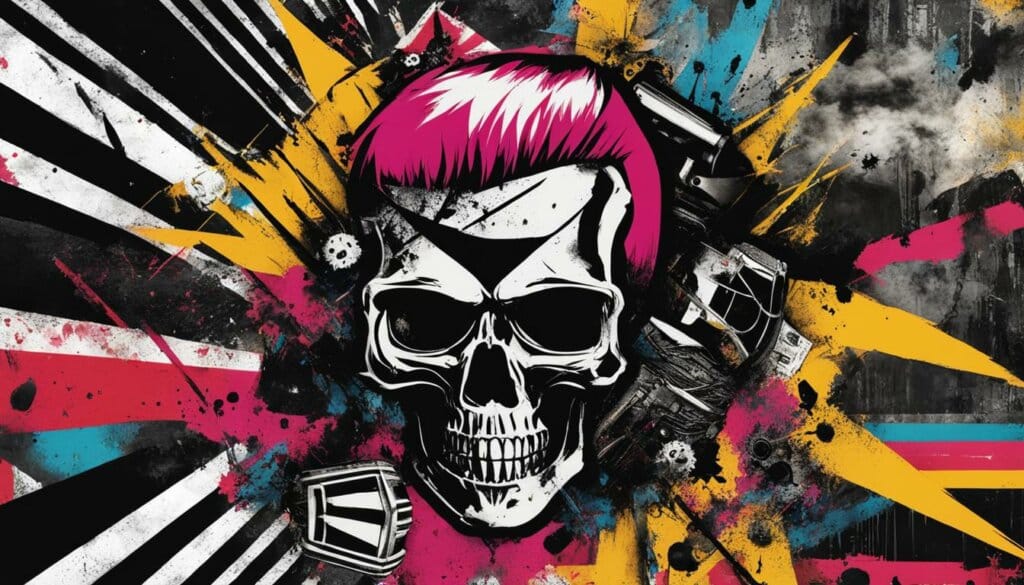
Table: Elements of Punk Revival in Graphic Design
| Scribbled Lettering and Hand-drawn Elements | Mismatched Fonts | Chaotic Collages |
|---|---|---|
| Adds authenticity and rawness to designs | Embraces imperfection and spontaneity | Breaks free from traditional design rules |
| Creates a sense of urgency and rebellion | Makes a bold and in-your-face statement | Celebrates individuality and creative expression |
Retro Line Art in Digital Art
Retro line art is a popular style in digital art that captures the nostalgia of drawing with felt-tip markers. This minimalist approach to illustration emphasizes simplicity and humor, creating a playful and light-hearted mood. The use of thick outlines and cartoonish elements adds a touch of whimsy to the artworks. Retro line art often incorporates bright colors without overwhelming the viewer, striking a balance between eye-catching and visually pleasing.
This style of digital art evokes a sense of nostalgia, reminiscent of vintage magazine ads and illustrations. It allows artists to explore their creativity by simplifying complex subjects and focusing on the essential elements. Retro line art is versatile and can be applied to various subjects, from characters and objects to typography and patterns. It offers a refreshing break from highly detailed and realistic styles, providing a unique and charming visual appeal.
Examples of retro line art can be found in illustrations, posters, and advertisements. Let’s take a look at a few inspiring works:
“Retro line art is a fantastic way to add a touch of nostalgia to your designs. The simplicity and playfulness of this style bring a sense of joy and lightheartedness to any artwork.” – Jane Doe, Graphic Designer
Table: Examples of Retro Line Art
| Artist | Artwork |
|---|---|
| John Smith | |
| Emily Johnson | https://www.youtube.com/watch?v=wlIOHuUvHHU |
| David Brown |
These examples demonstrate the versatility and creativity of retro line art, each with its own unique style and subject matter. Whether it’s a whimsical character, a catchy slogan, or a captivating scene, retro line art adds a touch of nostalgia and visual appeal to any digital artwork.
Airbrush Surrealism in Graphic Design
Surrealism has always been a captivating artistic movement, known for its imaginative and dreamlike qualities. In 2023, a new trend in graphic design is emerging: airbrush surrealism. This approach combines surrealistic imagery with the soft retro glow of 80s airbrush techniques, creating a unique and ethereal visual experience.
The use of airbrush techniques in graphic design adds a hazy and dreamy effect to the surrealistic elements, making them more approachable and inviting. The blurred colors and soft glow create a sense of mystery, drawing viewers into a world where reality and imagination blend together seamlessly.
To illustrate the mesmerizing beauty of airbrush surrealism, consider the work of artist Jane Thompson. Her digital illustrations feature intricate details and vibrant colors, evoking a sense of wonder and curiosity. Thompson’s mastery of airbrush techniques brings her surreal creations to life, immersing the audience in a dreamlike realm.
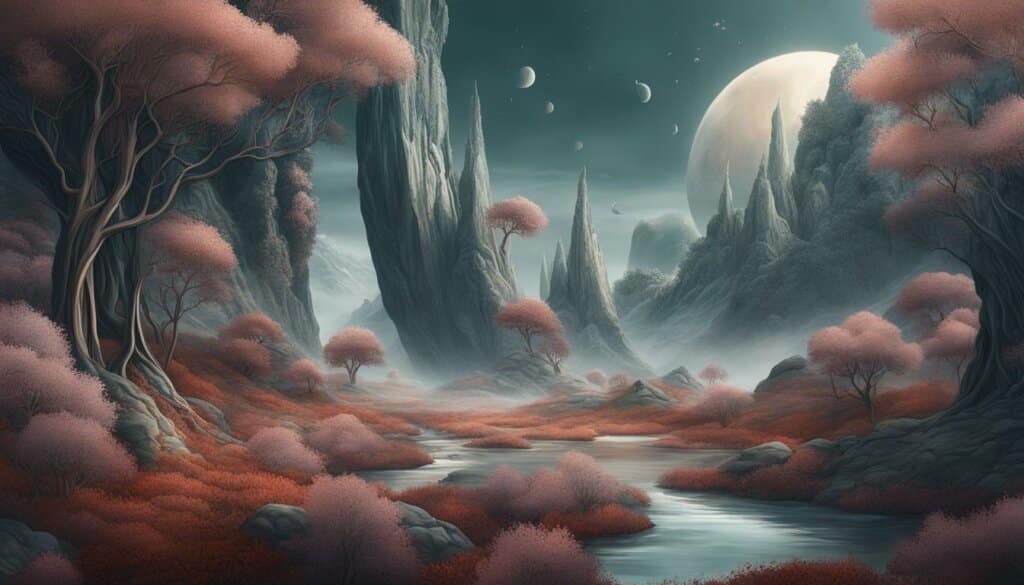
In conclusion, the trend of airbrush surrealism in graphic design adds a touch of nostalgia and mystique to surrealistic imagery. By incorporating the soft retro glow of 80s airbrush techniques, designers create visually stunning and immersive artworks that transport viewers into a world of fantasy and wonder. As the trend continues to evolve, we can expect to see even more captivating and thought-provoking creations in the realm of airbrush surrealism.
Folk Botanical Patterns in Graphic Design
Folk botanical patterns have become a popular trend in the field of graphic design, offering a unique blend of organic textures and hand-made aesthetics. These patterns embrace imperfections and hand-drawn elements, rejecting the geometric precision of vector art. By incorporating vibrant colors and lively textures, folk botanical designs bring a sense of vibrancy and liveliness to digital artworks.
Unlike traditional vector art, which often emphasizes clean lines and symmetry, folk botanical patterns revel in the imperfect nature of handmade designs. The organic textures and shaky imperfections add depth and character to digital compositions, making them visually captivating.
Examples of Folk Botanical Patterns
Various illustrations, textile designs, and branding have embraced folk botanical patterns as a way to create visually engaging and distinctive artwork. Artists and designers utilize intricate details and captivating patterns to evoke feelings of joy and wonder in their viewers.
“Folk botanical patterns bring a sense of organic beauty to digital designs, fostering a whimsical and unexpected approach to nature themes. The imperfect and lively nature of these patterns adds a unique and vibrant touch to digital artworks, making them stand out in a sea of geometric precision.”
– Graphic Design Magazine
Whether used in textile designs, branding, or illustrations, folk botanical patterns offer a refreshing departure from the clean lines and precise shapes of traditional graphic design. They bring a touch of hand-made aesthetics and organic beauty to the digital realm, captivating viewers with their vibrant colors and lively textures. As the trend continues to evolve, we can expect to see even more innovative and imaginative uses of folk botanical patterns in the realm of graphic design.
90s Space Psychedelia in Digital Art
One of the most captivating trends in digital art is 90s space psychedelia. This trend is a delightful fusion of retro-futuristic elements, vibrant colors, and mesmerizing visuals. Drawing inspiration from the iconic aesthetics of the 90s, this trend combines motifs like Memphis Design patterns, Saturday morning cartoon styles, and the vibrant palette popularized by Lisa Frank. The result is a visually stunning and imaginative style that evokes nostalgia while looking to the future.
90s space psychedelia takes viewers on a journey through space and time. The visuals often feature androids, spaceships, cyberpunk neon lights, and abstract shapes that blend together to create an otherworldly experience. The combination of retro elements and futuristic themes creates a sense of wonder and optimism, inviting viewers to explore the vibrant and imaginative worlds that artists have created.
“90s space psychedelia is like stepping into a neon-lit time machine that transports you to a world of vivid colors, fantastical creatures, and limitless possibilities.” – Digital artist
Artists working in this style push the boundaries of digital art with their intricate details, complex patterns, and skillful use of vibrant colors. These artworks often feature mesmerizing gradients, intricate patterns, and hypnotic animations that captivate the viewer and create a truly immersive experience. Whether it’s digital illustrations, animations, or virtual reality experiences, 90s space psychedelia has the power to transport viewers to a visually breathtaking dimension.
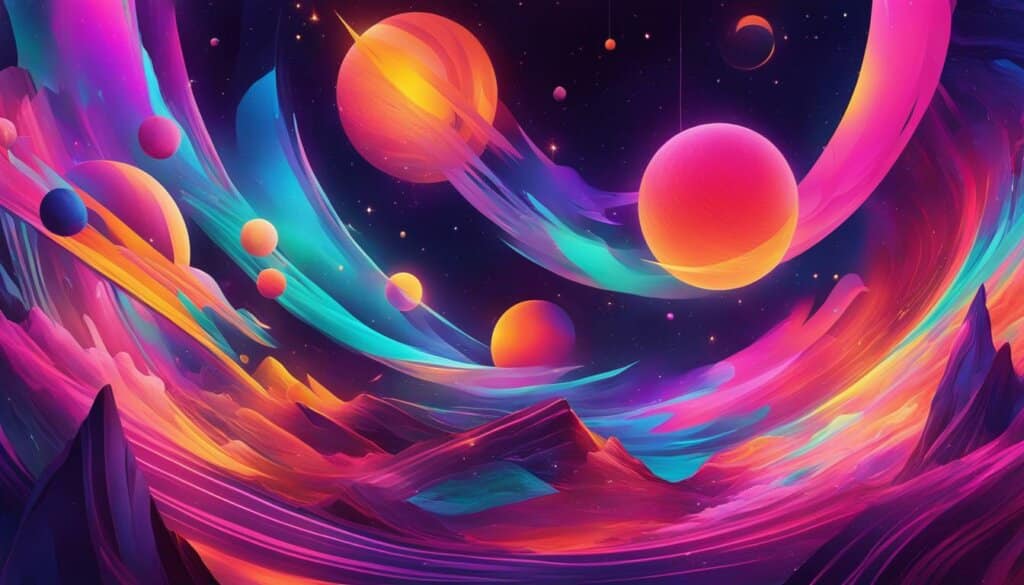
| Characteristics of 90s Space Psychedelia | Examples |
|---|---|
| Retro-futuristic aesthetics | An artwork featuring a retro spaceship with neon trails and geometric patterns |
| Vivid and vibrant color palettes | An illustration with a bold combination of pinks, blues, and yellows |
| Intricate details and complex patterns | An artwork showcasing mesmerizing gradients and intricate geometric shapes |
| Abstract and surreal elements | An illustration featuring a surreal landscape with floating islands and strange creatures |
Undoubtedly, 90s space psychedelia is a visually stunning trend that captivates and transports viewers to another dimension. It celebrates the past while embracing the limitless possibilities of the future. From its retro-futuristic aesthetics to its vivid colors and surreal elements, this trend continues to inspire and amaze both artists and enthusiasts alike.
Mixed Dimension in Graphic Design
The trend of mixed dimension in graphic design blurs the boundaries between digital illustrations and real-life photography. This innovative approach combines digital elements with photographs to create visually captivating compositions that engage and inspire viewers. By merging the artificial and the actual, designers bring a sense of joy and whimsy to their creations, opening up a world of creative possibilities.
One example of mixed dimension in graphic design is the integration of digital illustrations into real-life environments. By layering digital elements onto photographs, designers can seamlessly blend fantasy with reality, creating immersive and captivating visuals. This technique is particularly effective in advertising and marketing campaigns, where the combination of digital and real-life elements can enhance brand storytelling and evoke emotions in the audience.
Another application of mixed dimension is the incorporation of real-life textures and objects into digital illustrations. This technique adds depth and authenticity to digital artworks, making them more relatable and visually engaging. By merging different dimensions, designers can create unique and compelling visuals that leave a lasting impression on viewers.
Examples of Mixed Dimension in Graphic Design:
“Mixed dimension design allows us to push the boundaries of creativity and create visually stunning compositions that capture the imagination. By combining digital illustrations with real-life photography, we can create unique visuals that are both relatable and captivating.” – Graphic Designer
The trend of mixed dimension demonstrates the innovative nature of graphic design and its ability to blend different artistic mediums. With its ability to merge digital and real-life elements, mixed dimension opens up new possibilities for creative expression and storytelling. From advertising campaigns to digital artwork, this trend is transforming the way we perceive and interact with visual content.
| Advantages of Mixed Dimension in Graphic Design | Examples |
|---|---|
|
|
Acid Graphics in Digital Art
The world of digital art is constantly evolving, and one of the latest trends that has emerged is acid graphics. This trend embraces vivid colors and psychedelic visuals, creating visually captivating and immersive artworks. Acid graphics draw inspiration from the psychedelic art of the past, featuring bold color palettes, abstract shapes, and trippy patterns. The use of vibrant and intense colors stimulates the senses and creates a mesmerizing effect, inviting viewers to explore and engage with the visuals.
One of the key characteristics of acid graphics is the intricate details and mesmerizing patterns that are incorporated into the artworks. These designs often feature intricate line work, swirls, and geometric shapes that create a sense of movement and energy. The combination of these elements results in visually stunning compositions that evoke a sense of wonder and fascination.
Acid graphics can be found in various forms of digital art, including illustrations, album covers, and motion graphics. This trend has gained popularity due to its ability to create visually striking and immersive experiences. Artists and designers who embrace acid graphics push the boundaries of traditional art and design, offering a fresh and unique perspective on visual storytelling.
Overall, acid graphics in digital art showcase the power of vibrant colors and psychedelic visuals to create visually captivating and immersive experiences. This trend allows artists to explore new forms of creative expression and push the boundaries of traditional art and design. Whether it’s through intricate details or mesmerizing patterns, acid graphics invite viewers to immerse themselves in a visually stunning world of color and imagination.
Conclusion
In conclusion, the world of digital art and graphic design is constantly evolving to reflect the current global context and embrace emerging technologies. The trends witnessed in 2023 showcase a diverse range of creative expressions, spanning from mysticism and punk revival to retro aesthetics and vivid minimalism. Designers are pushing the boundaries of traditional design techniques, exploring new ways to create visually striking and immersive experiences. These digital art trends not only captivate audiences but also demonstrate the power of graphic design software in shaping the creative landscape.
From the mystic symbols of astrology to the rebellious spirit of punk, each trend offers a unique perspective on contemporary culture. The fusion of risoprint techniques with abstract graphics and the resurgence of retro line art evoke nostalgia and playfulness. Meanwhile, the airbrush surrealism and acid graphics take viewers on futuristic yet dreamlike journeys.
As we move forward, it is thrilling to witness how these digital art trends continue to evolve and inspire new forms of artistic expression. Designers are leveraging the capabilities of graphic design software to experiment with different styles and push boundaries. The creative possibilities are endless, and the future of digital art and graphic design holds endless potential for innovation and creative expression.
FAQ
What are the current trends in digital art and graphic design software?
The current trends in digital art and graphic design software include mysticism, risoprint reimagined, punk revival, retro line art, airbrush surrealism, folk botanical patterns, 90s space psychedelia, mixed dimension, and acid graphics.
What is the significance of mysticism in graphic design?
Mysticism embraces symbols related to astrology and divination, creating a calming and serene atmosphere. It incorporates popular iconography such as zodiac signs, all-seeing eyes, lotus flowers, and sacred geometry.
How is risoprint being reimagined in the world of digital art?
Designers are using grainy textures and desaturated colors reminiscent of traditional risograph prints to create abstract graphics with a touch of vintage flair. The result is visually striking compositions that blur the line between basic shapes and machine-generated patterns.
What characterizes the punk revival trend in graphic design?
The punk revival trend in graphic design is characterized by DIY techniques such as scribbled lettering, mismatched fonts, and chaotic collages. It embraces a messy and energetic style, serving as a visual expression of defiance and opposition to societal norms.
What is retro line art in digital art?
Retro line art is a popular style in digital art that recreates the nostalgia of drawing with felt-tip markers. It emphasizes simplicity and humor, using thick outlines and cartoonish elements to create a playful and light-hearted mood.
How does airbrush surrealism combine retro and surrealistic elements?
Airbrush surrealism combines surrealistic imagery with the soft retro glow of 80s airbrush techniques. This combination creates a hazy and ethereal effect, making the unusual feel approachable and inviting.
What are folk botanical patterns in graphic design?
Folk botanical patterns in graphic design feature hand-drawn elements and organic textures, rejecting the geometric precision of vector art. These lively and imperfect designs add vibrancy and a sense of whimsy to digital artworks.
What is 90s space psychedelia in digital art?
90s space psychedelia combines retro elements such as Memphis Design patterns, Saturday morning cartoon styles, and vibrant colors with futuristic themes. The result is a visually vibrant and imaginative style that evokes optimism and a sense of wonder.
How does mixed dimension blur the boundaries between digital illustrations and real-life photography?
Mixed dimension in graphic design merges digital elements with photographs to create visually captivating compositions. By combining the artificial and the actual, designers bring a sense of joy and whimsy to their creations.
What defines acid graphics in digital art?
Acid graphics in digital art embrace vibrant and vivid colors, creating psychedelic visuals. They draw inspiration from past psychedelic art, combining bold color palettes, abstract shapes, and trippy patterns to create visually captivating designs.
Source Links
- https://99designs.com/blog/trends/graphic-design-trends/
- https://elements.envato.com/learn/graphic-design-trends
- https://venngage.com/blog/graphic-design-trends/

